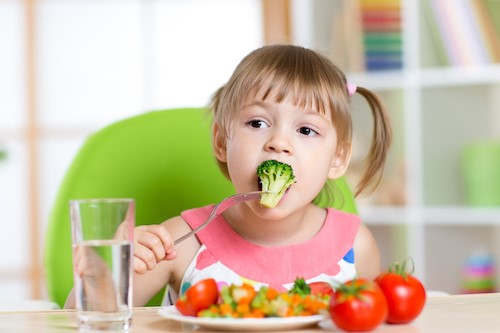Battle of the Dinner Plate: Taking on Picky Eaters
Mealtimes can become tricky if your child is a fussy eater, and sometimes the pickiness seems to appear out of nowhere. Fighting over broccoli stems and water isn’t fun. It can make a difficult and stressful eating environment. However, there are ways to encourage your little ones to eat and drink healthier. SUSO, a healthy soft drink brand, have explored some ways of improving dinner times, even with the fussiest eaters and drinkers.

Nelly Edwards, SUSO brand manager, said “Mealtimes should be a chance for families to bond, share stories and relax after a long day. They shouldn’t be a stressful time leaving everyone around the table wishing they had eaten alone. It’s important to be patient, even when you and your child are hangry!”
Relaxation
Dealing with a picky eater or drinker can be a frustrating time. You just want what is best for your child, and that involves a healthy, balanced diet, but how do you accomplish this when they throw anything green or healthy on the floor? Providing a calm atmosphere free from frustration and force is important for encouraging your children to widen the variety of what they consume.
This should remain distraction and bribery free. As tempting as it might be to include television into your dinner time routine, hoping your children don’t notice you slipping carrots onto their plate, this will not create healthy habits going forward. For the best results, your children should be actively choosing to consume their vegetables.
Make eating fun
While distractions aren’t a good idea, you can always make mealtimes fun. Incorporate the food into a story. It is said you shouldn’t play with your food, but whatever gets your kids eating what they need to, right? There are inspirations all over social media about making mealtimes fun, including broccoli trees or the favourite mash volcanoes with gravy or beans for lava.
Try food bridges
Food bridges are a fantastic way of incorporating new foods and encouraging your child to try them. Focus on what your child likes about specific foods, whether this is taste or texture, and try to replicate it with new ingredients. For example, if your child has difficulty drinking water or has a dislike for eating fruit, try suggesting fruit juice based soft drinks to encourage them to drink more whilst getting 1 of their 5 a day. Equally, if they are fans of carrot puree, then you can experiment with other orange-pureed items such as swede, butternut squash, and sweet potatoes.
Associate healthy items with positivity
Linking healthy food and drink items with positive activities can help improve the status of your fussy eater. Having healthy snacks such as carrot sticks and water bottles on hand throughout sports activities might help your child associate playtime with these items, making them less likely to reject them during dinner time.
Expect it to change with time
Just as fussy eating habits come, they can go. The trick is to remain consistent and not to discount ingredients straight away. Just because your child doesn’t want to eat something one day doesn’t mean they won’t try it in a week or two. Return to items your child won’t try or has claimed to dislike and even use food bridges to build towards bigger items if necessary.
Taste buds change approximately every two weeks, so continue trying new and old food and drink items – you never know when your child might surprise you.
Eat together
Planning family time to eat can help even the fussiest child to eat better. By spending time together, free without distraction, you can model healthy eating habits to your children. Studies show that 80% of parenting is modelling – rather than attempting to persuade and bargain with your toddler, imitating healthy eating could be the most beneficial teaching tool.
Making sure you stick to a schedule and maintain it can also help. Eating at the same time each day, with a specific time allotted, can ensure your child knows when to eat. It is important not to force your child to eat everything on their plate or to eat faster. Placing their food away after dinner time and encouraging them to eat it if they are hungry, rather than allowing snacks, can be a good way to truly assess hunger in your child as well as have finished plates at the end of the day.
Involve your child in the process
Your children should be involved in the process of preparing and cooking their food. This will give them a positive experience with the items they are going to consume. This is also a great way to introduce new items without the constraints of having them on a plate.
Educate them on where food comes from and how it is made. Teach them safety precautions in the kitchen, which can help reduce anxiety around new environments, situations, and ingredients.
Helping fussy eaters get a more varied diet, including fruit, vegetables, and water, can be a long and tiring process. However, building healthy habits over extended periods of time can help your fussy eater handle new tastes better in the future. Being involved in picking out food and drinks in the shops and cooking could make them more inclined to eat it. And gradually introducing new tastes and textures through association with good food categories can see your child resisting less. Whatever tactic you choose, remember that it will take time and patience.